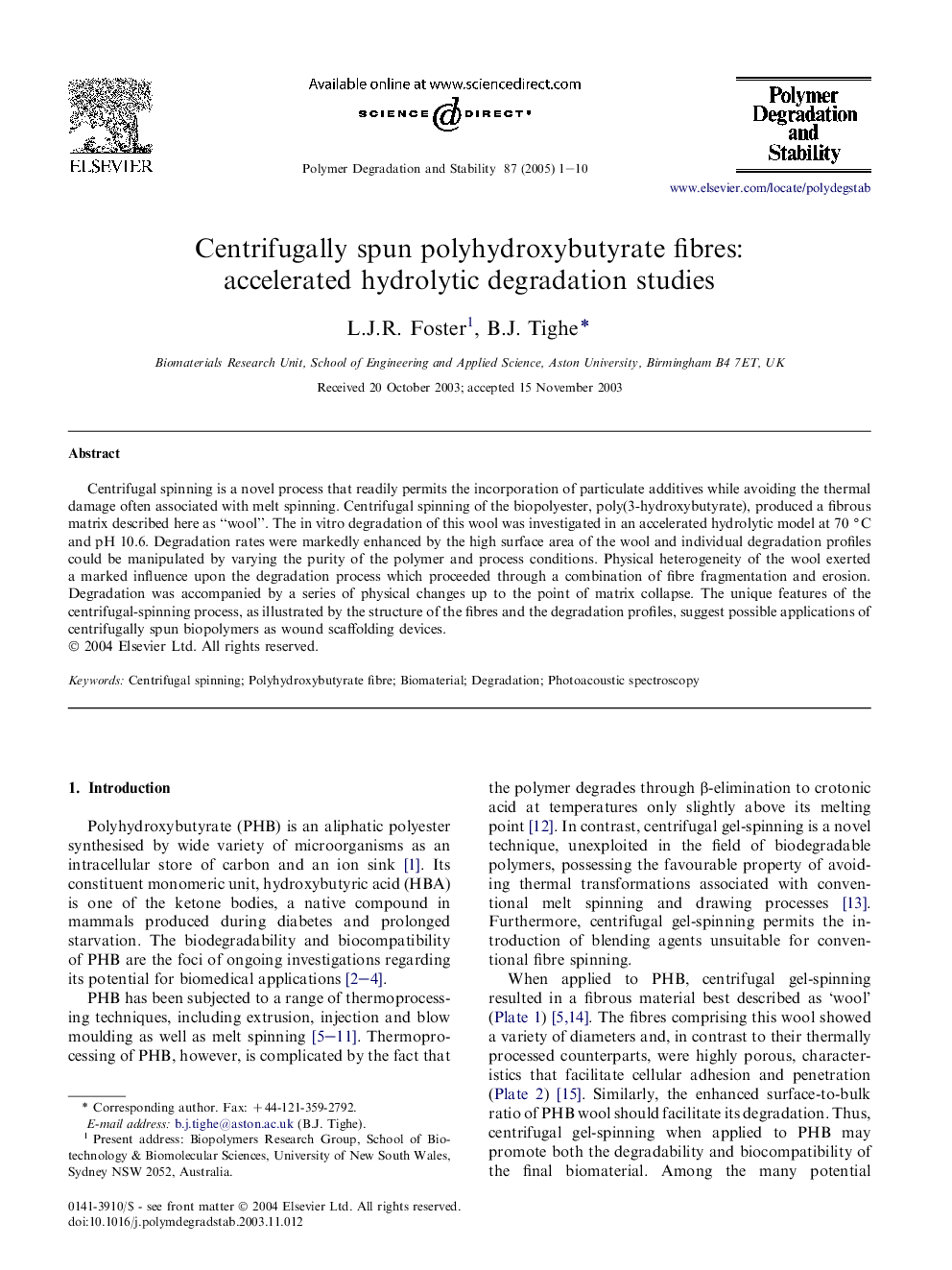| Article ID | Journal | Published Year | Pages | File Type |
|---|---|---|---|---|
| 9560316 | Polymer Degradation and Stability | 2005 | 10 Pages |
Abstract
Centrifugal spinning is a novel process that readily permits the incorporation of particulate additives while avoiding the thermal damage often associated with melt spinning. Centrifugal spinning of the biopolyester, poly(3-hydroxybutyrate), produced a fibrous matrix described here as “wool”. The in vitro degradation of this wool was investigated in an accelerated hydrolytic model at 70 °C and pH 10.6. Degradation rates were markedly enhanced by the high surface area of the wool and individual degradation profiles could be manipulated by varying the purity of the polymer and process conditions. Physical heterogeneity of the wool exerted a marked influence upon the degradation process which proceeded through a combination of fibre fragmentation and erosion. Degradation was accompanied by a series of physical changes up to the point of matrix collapse. The unique features of the centrifugal-spinning process, as illustrated by the structure of the fibres and the degradation profiles, suggest possible applications of centrifugally spun biopolymers as wound scaffolding devices.
Related Topics
Physical Sciences and Engineering
Chemistry
Organic Chemistry
Authors
L.J.R. Foster, B.J. Tighe,
